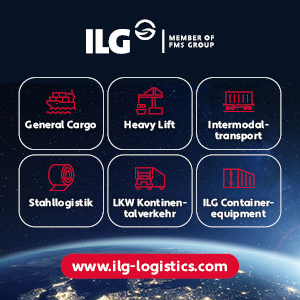On March 15, 2017, in cooperation with the Slovenian Embassy in Germany, the Bavarian Ministry of Economic Affairs, the Bavarian Chamber of Commerce and the Slovenian-German Chamber of Commerce, the Port of Koper organised a business forum under the slogan “The Port of Koper – An Attractive Alternative for Southern Germany”. The Slovenian delegation which attended the forum was made up of the representatives of 21 companies from Koper’s port community along with the representatives of three umbrella organizations, i.e. the Slovenian Association of Port Logistics Providers, the Slovenian Ship and Freight Agents Association and the Transport Association of the Chamber of Commerce and Industry of Slovenia.
The purpose of the event was, above all, to further consolidate the business contacts established in September 2016, when a strong economic delegation made up of the representatives of the leading Bavarian companies visited Slovenia and the Port of Koper. In the introduction to his speech, Franz Josef Pschierer, State Secretary at the Bavarian Ministry of Economic Affairs, highlighted the considerable progress made by the Port of Koper and underlined the huge potential that the port of Koper represents owing to its location. He stressed the broad interest of the Bavarian economy in Slovenia, not only in the sphere of logistics, and emphasised that half of all revenues generated by the Bavarian economy are derived from exports, and he mentioned China as their third-largest trading partner. Therefore, efficient and competitive transport routes are of key importance for further development.
A representative of the British independent consulting company Drewry presented the results of a recent study on container transport from Shanghai to Munich. The presentation consisted of a comparison between container transport via Northern European ports (Rotterdam, Hamburg and Antwerp) and transport through selected Mediterranean ports (Koper, Trieste, Rijeka and Genoa). The study’s conclusions were very similar to those published by Drewry last year: the fastest transport route by sea and by land is the route via Koper, which is the most cost-efficient as well.
Dragomir Matic, president of the management board of the Port of Koper, added: “Being that the port is only one link in the logistics chain, our intention at the forum is to present the comprehensive logistics solutions and best-practice experience we have gained thus far. As a matter of fact, we transship goods to markets that are equally distant or even more distant than the Port of Koper. Therefore, I see great potential in Southern Germany and Bavaria.”
Last year, 450,000 tonnes of goods were shipped to the German market via the Port of Koper. The most notable cargo consisted of vehicles, namely 220,000 units, whereas many opportunities still exist in the field of containers and general cargo. At the event was also presented the Fresh Food Corridor project (funded by the EU Programme CEF), which aims to develop logistics corridors with emphasis on the rail link for perishable goods via the port of Koper straight to the markets of Central Europe, including Bavaria.
Transit time from Shanghai up to landed at Munich rail terminal (days) – Source: Drewry Supply Chain Advisors

‘All in’ cost from FOB Shanghai to landed at the rail ramp in Munich (USD per 40ft) – Source: Drewry Supply Chain Advisors













